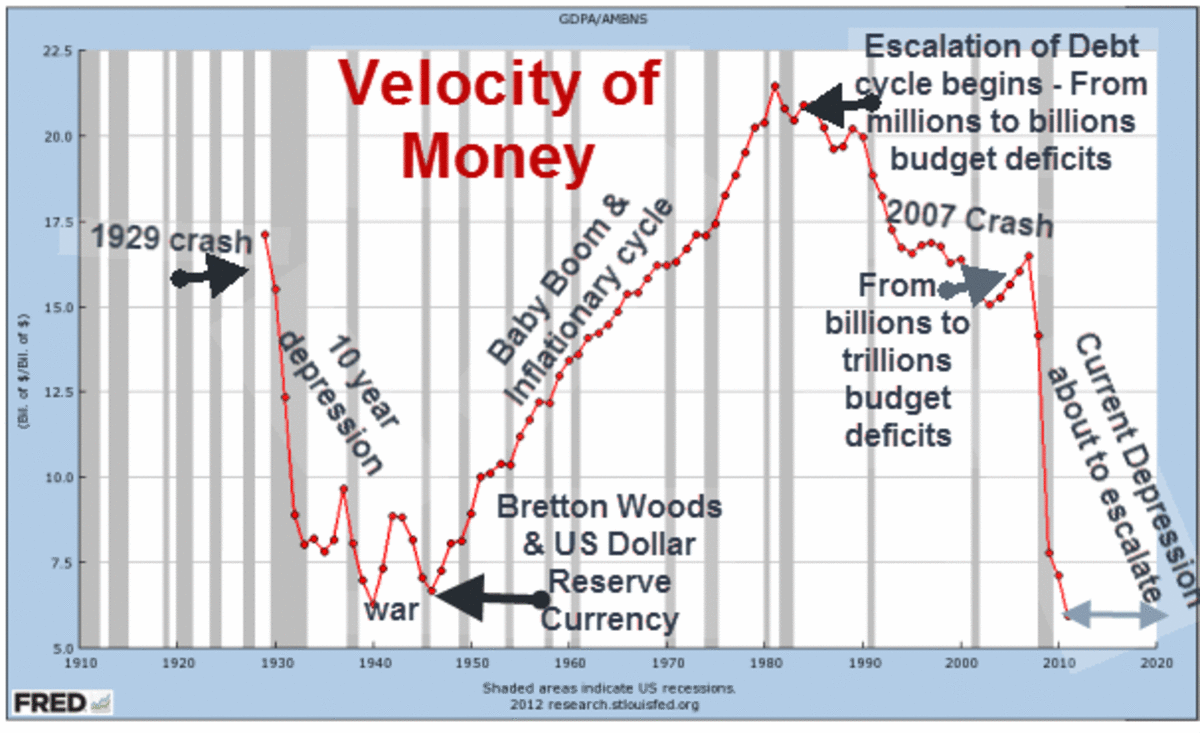A New Economic Metrics Model?

Introduction
It is August 2015 and we are still in an economic slow motion recovery. One that started in 2009 after the recession of 2008. If you look strictly at the economic indicators, things don't seem too bad. However, as a consumer and a citizen, we just don't feel things are in a good state. It is time to visit our economic metrics and see what can be done to better represent the state of our economy.
-August 2015
Current Metrics
Here are some common metrics on the state of our economy.
- Unemployment rate
- GDP
- Consumer Price Index (CPI)
- Average hourly wages
- Dollar vs. Yen or Euro
- Price of Crude oil
- Price of Gold
- Federal Reserve Fund Rate
- Stock market Index (Dow Jones or Nasdaq)
- Interest rate
- Misery Index (sum of CPI and Unemployment rate)
- Housing starts
- National Debt
- Trade deficits
Integrated Index?
I have a problem with some of the current indices. First, the accuracy of the index is in question. For example, the current U3 number stands at 5.3%. A more accurate number may be the U6 number of 10.5%. How they are computed year over year is also a question. Second, how the index is manipulated by the various government agencies. The Bureau of Labor Statistics maintains the record and history of past numbers. The third problem is that there is no one integrated index to tell us how well we are doing. The misery index was a poor attempt to quantify how good things are for the American people. With the current misery index being 5.42% (5.3% unemployment and 0.12% inflation), I just don't see how it reflects reality.

A Proposal
My simple proposal is just common sense. I believe there should be a simple index that will provide two pieces of information. How are we doing now? and what is the trend going forward?
I propose the following which I coined the LG index (Life is Good).
It consists of 2 numbers, both ranging from 0-9.
The first number ranging from 0 meaning a depression and a 9 meaning everything is rosy. The second number ranging from 0 meaning bottom falling out and a 9 meaning full speed ahead.
Here are some of the samples:
0:0 - Worst case scenario, In a depression and stuck.
3:3 - Recession and slowing down.
3:7 - Recession and recovering up.
5:5 - Steady and status quo (no growth).
7:3 - Good for now but future is dim.
7:8 - Good for now and improving.
9:9 - Best case scenario - Booming and the future is bright.
By the way, in August 2015, my personal opinion of the state of our economy using the LG factor is 5:6.
Some Details
How to implement it?
Identify a handful of important lagging indicators and leading indicators. The lagging indicators will be used to compute the first number of the index and the leading indicators will be used to compute the second number.
Take each number and normalize it based on a maximum and a minimum condition. They will be chosen based on some reasonable expectations. Next, depending on the direction of the number being positive on the economy or negative, place the number in the numerator for positive and denominator for negative. For example, the unemployment rate will be a denominator since the lower the number the better it will mean for the economy.
The next step will require some retroactive trial and error and data fitting. Each indicator must be weighted accordingly based on their effective impact. The total of all the weight factors will be 1. By using some known data from our past history, these factors can be determined empirically.
Finally, adjust the resulting composite number between 0 and 9, rounding to the nearest integer.
That is the essential strategy. Once the factors are determined, they should be made public knowledge. Anyone should be able to take the monthly indices and compute this LG index.
I propose the Bureau of Labor Statistics be charged with producing this monthly composite index and also maintain and publish the formula. They already have most of the historical data needed to accomplish this task.
Summary
I am not an economist. I don't have any expertise in this arena. However, we are all living under the current economic metric system. It seems to me, if the model is not working properly, or it does not reflect the state of our economy, a better model needs to be created. I made a simple proposal. I am hoping to stir some interest in the financial industry. Can someone look into a new economic metrics that will be a better indicator on where we stand?
Some Related Information
- U.S. Bureau of Labor Statistics
The Bureau of Labor Statistics is the principal fact-finding agency for the Federal Government in the broad field of labor economics and statistics. - Misery index (economics) - Wikipedia, the free encyclopedia
- List of 16 Major Leading & Lagging Economic Indicators
Where is the economy headed? Learn more about the various leading & lagging economic indicators that will enable you to gauge the health of the economy. - U.S. National Debt Clock : Real Time
US National Debt Clock : Real Time U.S. National Debt Clock








